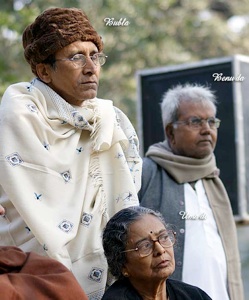Originally posted on Thurseday, February 12th, 2009
I decided to bring over some of my old posts sprinkled over the net here and there. One source is the iWeb blog site with Apple’s software and web space called শান্তিনিকেতনের খাতা (Santiniketaner Khata), which means diary from Santiniketan. Santiniketan, is my birth place. That is were I went to school. But the place is more than just that. It was where Rabindranath Tagore tried to make his dream come true, and leave his creative software. It was software that was designed to help future mankind – not just in and around Santiniketan, but around the world, along a path that would have been more creative, congenial, and harmonious for the people and the planet. Tagore had created a lot of poetry and literature, for which he was recognized. But the software was his best creation, and his best gift to mankind.
Unfortunately, the software today is virus afflicted and dying.
Some of my writings on Santiniketan, my birth place where I had five generations of exchange, starting with Tagore himself bringing one of my ancestors to the place to help in its inception and construction.
Its a sad story.
—————————————-
Bubla has an expressive face, I came to the conclusion, after having seen a number of his pictures in my collection from the last Poush Mela. Faces float across our screen as I flip through my photo folder labelled “Santiniketan 08-12”.
 I sometimes go back to a handful of these pictures and look at them again. They bring a smile. That expression of Uma di, intently listening to Somenda speak at the Asramik Sangha, or Baka da, with his sun glasses, that remind me of the movie “of all the President’s men”.
I sometimes go back to a handful of these pictures and look at them again. They bring a smile. That expression of Uma di, intently listening to Somenda speak at the Asramik Sangha, or Baka da, with his sun glasses, that remind me of the movie “of all the President’s men”.

Then there is Bubla with his wiinter cap, and the wild haired Benuda. They all represent faces, and bring back the flavor, of Santiniketan. Benuda, at certain angles, remind me of his father, Bodo Daktar babu. I remember running about on our bed at Ratan Palli, and bodo Daktar babu trying to catch me. The issue was some vaccination, which I was unwilling to take, and he was determined to administer.

It was mid morning in Amra Kunja. The sun filtered through the canopy and struck the ground at a slant, coming from the north east. There were gigantic looking box shape speakers erected all around us.

They looked odd and intrusive, loud and somehow faintly offensive. They tried to pull me away from the Amra Kunja, back into the mechanical and noisy world that I had hoped to leave behind, to attend the Asramik Sabha. as the congregation was small, and every one was close to each other,

I wondered if there was a need for those massive speakers.

kind of speaker system could also be used during the general discussion. It did occur to me that, instead of speakers, one might consider providing some of the new generation hearing aid devices, where the microphone is a small hand held piece of plastic the size of a box of matches, with matching radio operated speakers that fit the ears of individual listeners that need them.

This would make them unobtrusive, and same time spare the others from feeling an oppressive presence of huge speakers and the corresponding noise. In the adjacent ground, more loud speakers boomed, and we were forced to hear the preparations for the Alumni Association meeting. Somehow, I could not bring myself to appreciate the loud speakers.
Well, I should write up some more in the next few days… even include some of the topics of discussion. But then, I already put all that up, from the recording, on a Podcast. But, as they say, a picture is worth a thousand words.
